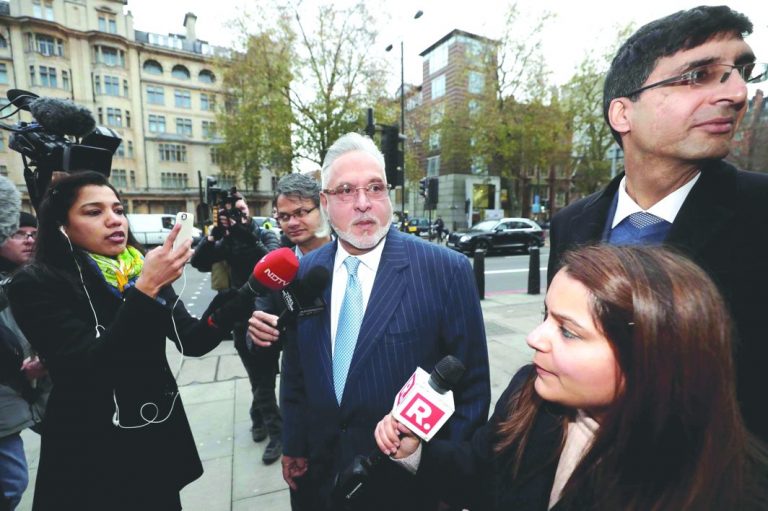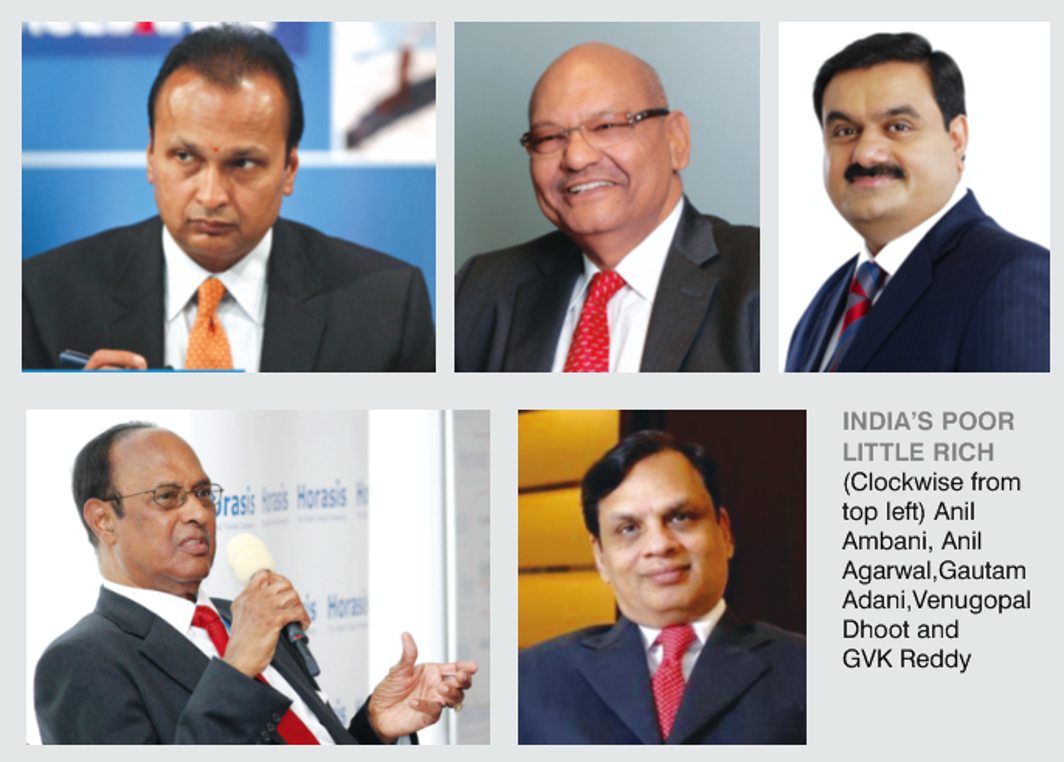
In view of the growing number of absconding defaulters, the government has tabled the Fugitive Offenders Bill in the Lok Sabha. But is it serious about getting them back?
~By Kingshuk Nag
With Nirav Modi now, and his uncle and co-conspirator in the Rs 11,500 crore PNB scam, Mehul Choksi, earlier, telling the CBI that they would not come back to India and facilitate the investigations, the government seems helpless about getting them to face the law. “In the case of Vijay Mallya, everybody knew where he was. So the government could move the courts to extradite him, but for Modi and Choksi there is no firm evidence on their whereabouts,” confided an investigating agency official.
Modi and Choksi have responded to the CBI on mail. But there is no way of knowing whether they have themselves replied on their email accounts or got some confidant to open their mails to send a reply! Both have mentioned that they feared for their personal safety and security. Choksi said that he underwent a cardiac procedure in February 2018 and has been advised by doctors not to travel for “4-6 months”. Modi said that since the CBI had seized his servers and files, he was “handicapped” in sharing information with the investigating agencies. This, he asserted, had taken away his fundamental right to defend himself. Though both of them have not stated so, they can well argue that since their Indian passports have been cancelled, they can’t travel back to India.
Investigators suspect that Modi and Choksi are hiding either in some western European country or the US from where extradition is not easy. For instance, since 1993 when India and the UK entered into a Mutual Legal Assistance Treaty, only one person has been extradited. Mallya, now in London, is mounting a court offensive that there is a witch-hunt against him, the CBI has a very poor investigation track record, and the jails in India have very poor facilities.
BILL TABLED
Faced with accusations of going slow ever since Mallya absconded on March 1, 2016, the finance ministry brought in a proposal and tabled the Fugitive Offenders Bill in the Lok Sabha earlier this month. A person who leaves India to avoid criminal prosecution for fraud of Rs 100 crore and above and refuses to return, will be declared a Fugitive Economic Offender (FEO). His properties will be liable to be confiscated by order of a special court set up for the purpose. Though the Bill is yet to become law, many lawyers feel that it can be challenged in a court, once promulgated. For one, it does not wait for conviction before the property is confiscated. Further, it does not provide for the property to be returned if the case against the accused is not proven by a court of law. Moreover, the government can sell property that is jointly owned with other people who are not FEOs.
“The proposed legislation is an extension of the Prevention of Money Laundering Act (PMLA) and designed to secure the presence of alleged offenders who are abroad. Under the provisions, the moment a person declared as FEO appears before the designated court, the proceedings will be halted. I doubt, however, that anyone will return just to stop their properties from getting confiscated,” says criminal lawyer Diljit Ahluwalia. “I think the government, accused for not doing enough to nab the economic offenders, is planning this law to give the impression that it is active,” says former customs commissioner-turned-lawyer GV Reddy. Meanwhile, investigating agencies have taken charge of 21 properties, half a dozen luxury vehicles and Rs 5,100 crore worth of diamond and gold jewellery belonging to Modi.
Earlier this month, Minister of State for External Affairs MJ Akbar released a list of 31 economic offenders who are absconding abroad. The list includes Mallya, Modi and Choksi, but also lesser-known names. Akbar said that his ministry had received requests for starting extradition proceedings against Ashish Jobanputra, Puspesh Kumar Baid, Sanjay Kalra, Varsha Kalra and Arti Kalra.
According to the FIR filed by the CBI, Jobanputra, who ran ABC Cotspun Pvt Limited, presented bills worth Rs 770 crore to the State Bank of India and Bank of Baroda based on false documents that showed that the company had dispatched cotton bales to China. The banks “discounted” the bills and paid money to the company in 2015 only to discover that they had been defrauded. Jobanputra is now in Los Angeles. Baid of Kolkata cheated many public sector banks by taking loans totalling Rs 700 crore on the basis of forged documents of properties. The money was never used for the stated purpose. He has been absconding since 2012.
Interestingly, many of the 31 absconders are not on the Interpol red corner notices (which help immigration authorities nab them the moment they seek to travel internationally), indicating the ham-handed approach of the investigation agencies. Banks are guilty of restructuring loans of many like Mallya and forking out more money (see box).
The Rich and the Favoured
There is a huge difference in the way banks treat their debtors. Some with outstanding loans above Rs 100 crore are told to give the money back within the 45-day deadline, no quarter given and with threats of strict action, while others are given plenty of rope in terms of “greening” or repeated restructuring of debts. The latter class represents some of the biggest names in Indian industry (including Vijay Mallya and Nirav Modi), those who regularly figure on India’s Rich List.
The government released data earlier this month in the Lok Sabha which said that the total bad loans from the “industry-large” category of loans, as of December 31, 2017, stood at Rs 5,27,876 crore. This was for scheduled commercial banks as a whole. The RBI defines a large borrower as someone with whom the bank has an exposure of Rs 5 crore or more.
Bank loans to large industrial borrowers formed 59 percent of bad loans with public sector banks accounting for Rs 4,64,253 crore or 88 percent of bad loans.
An India Legal cover story last April had listed the top 10 defaulters. The list is reproduced below:
Reliance ADAG: The Anil Ambani-led group has a debt of Rs 1.25 lakh crore. Net assets: $29 billion
Vedanta: Anil Agarwal’s metals and mining enterprise owes Indian banks Rs 1.03 lakh crore. Total assets: $36.98 billion
Essar: The company run by the Ruia brothers has debts totalling Rs 1.01 lakh crore. Revenue: $27 billion
Adani Group: It owes banks Rs 96,031 crore. Net assets: $19 billion
Jaypee Group: Has an outstanding of Rs 75,163 crore. Revenue: $2.1 billion
JSW Group: Sajjan Jindal is the chairman. It has debts amounting to Rs 58,171 crore. Revenue: $11 billion
GMR Group: A construction and turnkey projects company, it owes banks Rs 47,976 crore. Revenue: $2 billion.
Lanco Group: Runs solar and thermal plants. Owes banks Rs 47,102 crore. Revenue: $1.4 billion
Videocon: This group owes banks Rs 45,405 crore. Revenue: $4.8 billion
GVK Group: Founded by GVK Reddy, it is into infrastructure, energy and hospitality. It has Rs 34,000 crore as debt. Revenue: $0.47 billion.
The bottomline is that a report by an independent rating agency concluded that a major portion of the debt held by “vulnerable” corporates may have to be written off. If that does happen, it is the taxpayers who will be footing the debt bill.
(Debt figures are from Credit Suisse AG; assets/revenue figures are from market estimates)
The CBI had to file suo motu cases against Mallya as banks were shy of doing so. In the meanwhile, Mallya fled.

